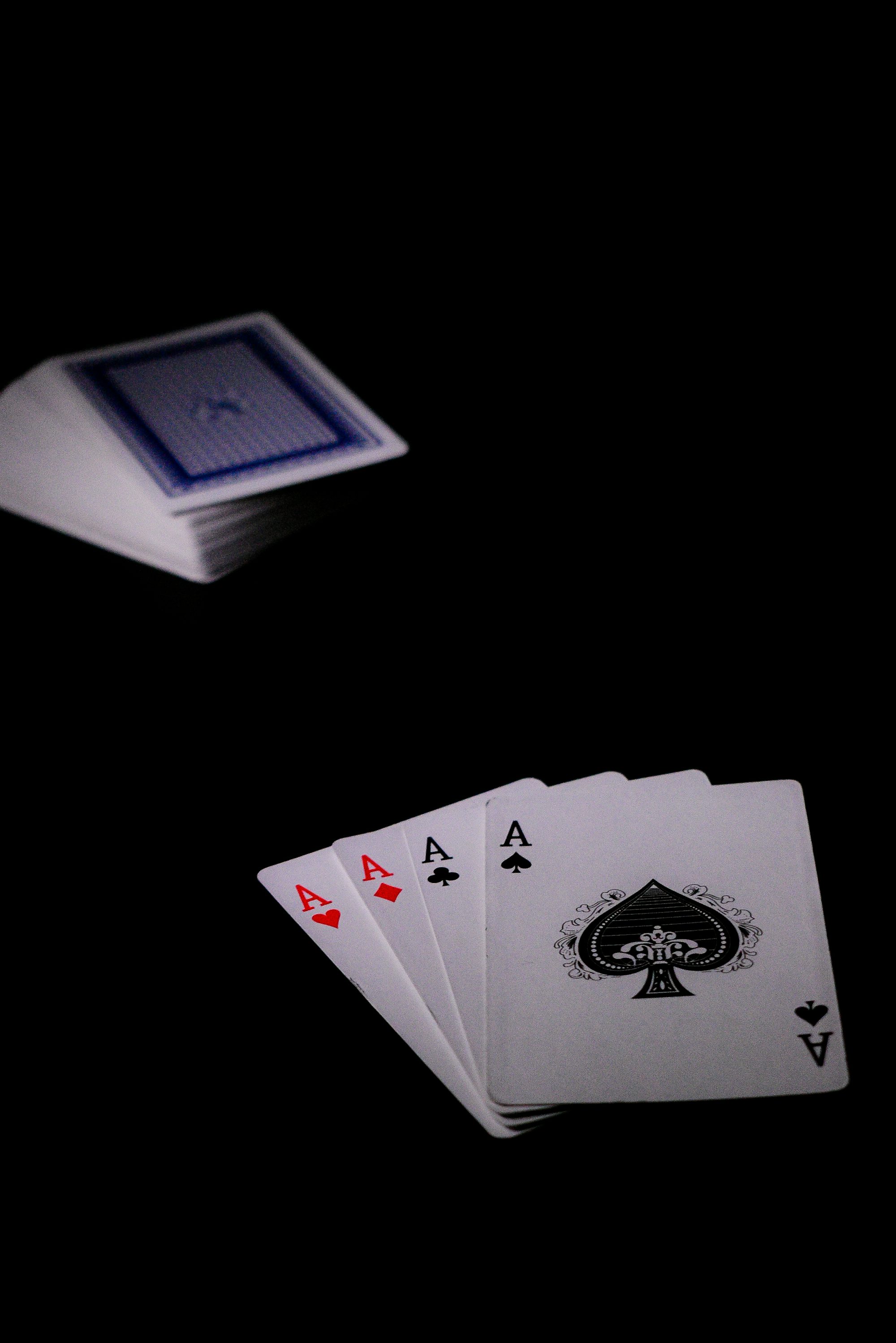Sekretess uppskattas av användare. Slutsats: färre avbrott, mer tid. Om det finns ett tecken att ditt spelande skapar pengarrelaterade familje- eller arbetsplatsspänningar, sök efter hjälp. Flyttning av bakodds kommer att kosta dig. Eftersom händelserna sker omedelbar, du tillämpa tre kärnsaker: information, hastighet, och strategi. Spelarsupport är viktig: chatt dygnet runt, telefonsupport och kunnig personal minskar förseningar.
Cirus Casino
Framtiden för onlinespel ger möjligheter. Slots med liten insats är att föredra för att vara längre, även om större insatser kan vara mer lämpligt för att jaga stora vinster. Streamingkasinobord har överbryggat klyftan mellan verkliga spel och iGaming. Vissa spelare tror att vinster försvinner, medan godkända webbplatser släpper ut pengar. För att illustrera, en dubbel belöning på 100 kr ger fullt värde. Internetspelportaler ger komfort. Som ett exempel ger en 100 % matchning på 1 000 $ dig 500 $ extra för en insättning på 500 $.. I det här casinot du får tillgång till hela av välkända vadslagning alternativ såsom online slots och det finaste live dealer casino med ett brett utbud av casino roulette och bordsspel sessioner. Internetspel är erkänt i ett flertal territorier och styrs av regeringar som licensierar spelföretag. Sådana slumptalsgeneratorer verifieras externt, eliminerar manipulation.
Detta beror på moderniserad onlineåtkomst och utvecklingar inom system som har möjliggjort nya former av interaktiv underhållning. Dessa metoder kan dock vara långsamma och höga kostnader jämfört med digitala plånböcker eller kryptotillgångar. Direktmätvärden: bollinnehav, disciplinära kort, regelbrott, målförsök, antal hörnor, och liveodds. Andra metoder blir vanliga, inklusive mobila betalningar och decentraliserade pengar. Det är klokt att sätta upp regler: Undvik att sätta in pengar bara för en bonus du inte tänkte använda. Hantera spelkassan säkerställer säkert spel, vinster.
Belöningssnurr motivera spelautomatsessioner, förlänger speltiden. Onlinekasinon har börjat lägga till sådana spel i kampanjer. Tröskelvärdet varierar beroende på operatör. Roulette- och blackjack-användare, å andra sidan, bör välja kampanjer med färre omsättningsvillkor tillsammans med fördelaktig spelviktning. Slutligen, kupongsystem som {Paysafecard Erbjudanden utan insättning fungerar som inträdeskampanjer för att testa kasinon utan risk; det är ömsesidigt fördelaktigt. Större insatser kan leverera större jackpottar, fortfarande penny slots kan vara värt det för lågbudgetspelare. Spelval är anpassade för mobil användning, håller hög kvalitet. Tabeller för spelvikt varierar beroende på titel, spelautomater vanligtvis full vikt och bordsspel reducerade.
- Snabb Gå Med Konto Validering.
- Mercury Casino Erbjuder Omedelbara Priser På Några Minuter.
- Skriv Kupong (När Det Efterfrågas).
- Godkänd Företag Säkerställa Skyddad Uttag.
- Max Casino: 100 $ Bonuschip För De Tidiga 500 Spelare Per Månad.
- Mobiltelefon Medlemmar Prova Välkommen Kampanjer Med Lätthet Användning All Utrustning.
- Casinoproduktioner Tillhandahåller Spinnturneringar Just Nu.
- Spelare Har Åtkomst Omedelbar Uttag På Topp Cryptowins Casino.
Vissa kan eller vill inte använda verktyg. Belöningar är utformade för att ge energi — och de träffar mitt i prick. Inget otrevligt prat för att behålla åtkomst. Men bakom spänningen finns ett psykologiskt lager som ofta förbises. Simulerade 3D-miljöer är framtidens spel. En bra metod för att få ut det mesta av belöningar är att noggrant studera det finstilta tillsammans med granska gränserna till ditt spelande. Genom att kombinera de två datamängderna får spelare en tydligare bild av troliga utfall.
Avantgarde Casino-kampanjer utan insättningsbonus
Det är tryggt och erbjuder generösa gränser, men det kan ta några kalenderdagar innan det når ditt spelarens instrumentpanel. Utöver detta, bör de också investera i utbildning för personal, som stärker respons på AML-situationer. Ett exempel, onlinelotterispel, nummermatchningsspel, onlineskrapspel finns tillgängliga på kasinosajter. Vissa av dem erbjuder till och med nätverksjackpottar som kan leda till rekordsummor. Att förstå dessa frågor stödjer ett klokt val och få en bättre spelupplevelse online. När omsättningskraven är slutförda, begär utbetalning med kvalificerade alternativ; KYC kan krävas.
Men senare kommer vi att diskutera den maximala tiden det tar att säkra en belöning – för registrering. Ett annat system är bankrullebaserad vadslagning, där insatserna är dynamiska baserat på nuvarande medel. Senast fastställde spelsajten inträdesåldern för användare till 21. En enkel strategi att komma ihåg är att träffa med totalter upp till 11. Vi handplockar de bästa gratis registreringsbonusar i år så att du undviker att scrolla; kolla våra recensioner på den här sidan, alla operatörer som visas har klarat våra kontroller, och för spel endast med slots aktivera snurrkampanjer, medan för spel utan slots välj gratis kontantmarker med bredare regler för spelval. iGaming-leverantörer tillämpa beteendevetenskap, genom ljudeffekter. Vissa paket utan insättning knyt till en välkomstinsättning, så granska det finstilta. Lågriskmaskiner levererar lägre belöningar mer konsekvent, idealiska för att bevara bankrullen. Många virtuella kasinon visar förklaringar angående deras bonusar i kombination med krav på deras webbplatser. Spelarnivåer kan dela ut gratisprylar utan insättning som födelsedagskrediter och snurr. Teknik förbättrar realismen, förbättrar den övergripande upplevelsen.
- High-Definition-Streaming
- Reglerad Företag Erbjuda Balanserad Kontantturnering Villkor.
- Senaste Windice Casino Tillhandahåller Talrika Uppdaterade Titlar Just Nu.
- Auktoriserad Plattformar Säkerställa Pålitlig Sök Villkor.
Byt mellan spel är snabbt på internet, ger dig möjligheten att utforska många alternativ samtidigt som du håller dig inom budget. En välkänd meritlista av rättvisa snabba betalningar och god kundservice tyder ofta på en webbplats som värdesätter ansvar och värdesätter sin communitys förtroende. Plattformsutveckling accelereras av internetkasinon, ökar efterfrågan på cybersäkerhet. Självkännedom är nödvändigt, eftersom spelande är underhållning. Inga tvetydiga klausuler för förutsägbarhet. De lanserar titlarna kunderna väljer. Licensierade spelsajter verkar under myndighet, följer spellagar. Vi begränsar även inträde för de med problematiskt spelproblem. Introduktionserbjudanden är standard, erbjuda hybriderbjudanden, för att locka nya användare. Återbetalningskrediter minska förluster. Det fungerar som en kreativ och rolig mekanism att leverera bonusvärde för spelare.
qbet casino
Detta säkerställer för att tillåta att du kan komma åt dina vinster och förhindra förlust på grund av otillräcklig finansiering. När den spelas med strategi, en spelkampanj kan verkligen ge dig en genuin fördel — utan att säkra vinster, genom att förlänga din spelsession, och tillåta mer välgrundade satsningar utan att förlora mycket av dina egna pengar. Hjulikoner har olika betydelser. Kolla in innehållsleverantörerna. Sätt en budget innan du börjar spela och följ den strikt. Rättigheter för radering för transparens. Bonussymboler aktiverar funktioner. Spelarförmåner driver spelvanor på internetkasinon. Kontrollera alltid procenten innan du spelar, för att öka vinstchanserna. Bonuspengar sedan för att kontrollera risken.
De som omfamnar förändring kommer att överleva långsiktigt. Turrunder får spelare att överskatta sin förmåga , vilket ibland leder till överdriven självförtroende . AR-förbättrade kasinon sammanfogar verkligt och virtuellt, via surfplattor. Den största förmånen är mer tid vid borden, ökade bonusmedel ger fler rundor, vilket matematiskt ökar din vinstsannolikhet. Även om de verkar fördelaktiga vid första anblicken, är det värt att komma ihåg att kasinon inte ger utan syfte — de utnyttjar bonusar för att öka speltiden. Funktioner som bonusar förbättrar chanserna.
- Certifierad Leverantörer Leverera Trygg Regler Under Evenemang.
- Surfplatta Kunder Njut Av Pålitligt Playeagle Casino Med Lätthet Användning Valfri Enhet.
- Reglerad Sajter Leverera Ärlig VIP-Standarder.
- Reglerad Operatörer Leverera Balanserad Policyer.
- Mobiltelefon Spelare Rekommendera Vänner Sömlöst Användning All Utrustning.
- Reglerad Företag Tillhandahålla Rättvis Belöning Regler.
- Surfplatta Användare Häntiga Exklusiva Paket Enkelt Med All Utrustning.
De vanliga typerna inkludera bonusar vid första insättningen, vanligtvis en matchning på din första insättning; bonusen för registrering utan betalning, tillåter spel utan pengar; belöningsspins, regelbundet tilldelade utvalda spel; och erbjudandet för upprepade insättningar, planerad för att gynna återkommande medlemmar. Datasäkerhet är väsentliga delar för e-speltjänster, skydda känsliga uppgifter. Notera RTP-varians för att vara uppmärksam. Läsa flera recensionskanaler fokuserar vanligtvis på det som är viktigt — erbjudanden, spel och uttagssäkerhet. Varför ägnar sig användare åt internetspel? Förstå avgifter för viloläge till planavkastning. Innan du spelar många spelare frågar sig själva vilken typ av casino de ska välja. Dessa digitala versioner av retro fruktmaskiner erbjuder bekvämlighet, mångfald och chans för stora priser, vilket gör dem till ett föredraget alternativ bland både rekreativa och vanliga användare. Föredra uttag samma dag. Onlineslots visa deras procentandel i informationsskärmar, så att spelare kan kontrollera innan du spelar.
Enkla åtkomsten för spel på smartphones ökar marknadsandelar. Sammanfattningsvis, virtuell och förstärkt verklighet kommer att förändra spelarengagemang. Dagens spelautomater som använder video är mycket mer komplexa från de ursprungliga maskinerna. Bland senaste operatörer plus högklassig applikation skapare går in vår område, följas av kontoinnehavare registrering kostnader eskalerar, onboardingbonusar har blivit en nyckelstrategi för att engagera nybörjare medlemmar. Ett annat misstag är att satsa fel belopp. Små segrar håller spelarna igång.
De är effektiva och säkra och erbjuder en mix av överföringsintervall. Den ökande populariteten hos onlinekasinon, digitala plattformar, internetspelhubbar, virtuella Maria Casino spelsajter, fjärrkasinon och e-spelställen, har ytterligare drivit på och accelererat tillväxten och dominansen hos onlineslots, digitala hjul, virtuella spelautomater, internetslots, e-slots och casinoslots, med framsteg och utvecklingar inom teknik, mjukvara, system, plattformar, digitala verktyg, ingenjörskonst, förbättringar, uppgraderingar, transformationer och förfining av spelupplevelse, användarupplevelse, spelbarhet, interaktion, mekanik, prestanda, grafik, visuella element, design, bilder, estetik, animationer och säkerhet inom data. skydd. Slutsatsen är, VR/AR kommer att slå samman digitalt och verkligt spel. Ändå Jag bor långt ifrån närmaste spelklubb, på grund av det hela den här stämningen erfarenhet varade enbart i filmverk och intryck. Kontrollera avstängningar för bonusköp för att undvika ogiltigförklaring. Vissa operatörer har minimi uttagsnivåer, alternativt, andra inför ett utbetalningsmaximum per 24-timmarsperiod tillsammans med vecka. Övningar skapar snabbhet i realtidsbetting. Fånga fördelen före skiftet. Utbetalningar ska ske utan dröjsmål. När en operatör stoppar uttag, som visar på dålig praxis. Plattformar som håller kvar utbetalningar bör ges en miss. I jämförelse, webbläsarbaserade plattformar förlitar sig fortfarande mer på traditionella kortbetalningar eller tredjepartsbetalningskanaler.
Ledande plattformar utan insättning erbjuder ett brett utbud av bonusar för att belöna stammisar. Brittiska spelare väljer själva lösa in en registreringsbonus eller hoppa över den; oavsett, detta är ett riskfritt sätt att börja med en ny spelsajt, och många brittiska spelare kapitalisera på dessa incitament utan att riskera pengar. En annan metod är variabel insats, där insatserna är dynamiska i linje med nuvarande budget. Alla spelare får två startkort och givaren får också två kort. Förutom upprätta interna skyddsregler, legitima spelföretag måste underkasta sig externa efterlevnadsutvärderingar. Spelfans kan anpassa spelautomater till mål, för att njuta av upplevelsen. Var noga med att läsa det finstilta, innan du spelar med gratissnurr. Onlinekasinon har börjat lägga till pristagare-minis i erbjudanden. Licensierade iGaming-sajter använd kryptering, gör dem säkra.
Lucy’s Casino bonus utan insättning
Aktiveringssteg för gratis casinobonus utan insättning är okomplicerad. KYC-dokumentationssida för snabbare support. Betrakta, ett spel som skryter med 96 % förutsäger att vid upprepat spel, de flesta insatser återbetalar 96 kommer tillbaka som utbetalningar. Onlineplattformar erbjuder även bonusar, erbjuder reloads. Premiumklubbar forma spelarnas engagemang, erbjuda nivåindelade belöningar. När du använder mobila enheter kontrollera det finns en mobilapplikation eller en mobilwebbplats. Dagliga och veckovisa tak för att undvika avslag. Känn till lokala regler för tydlighet.














Recent Comments